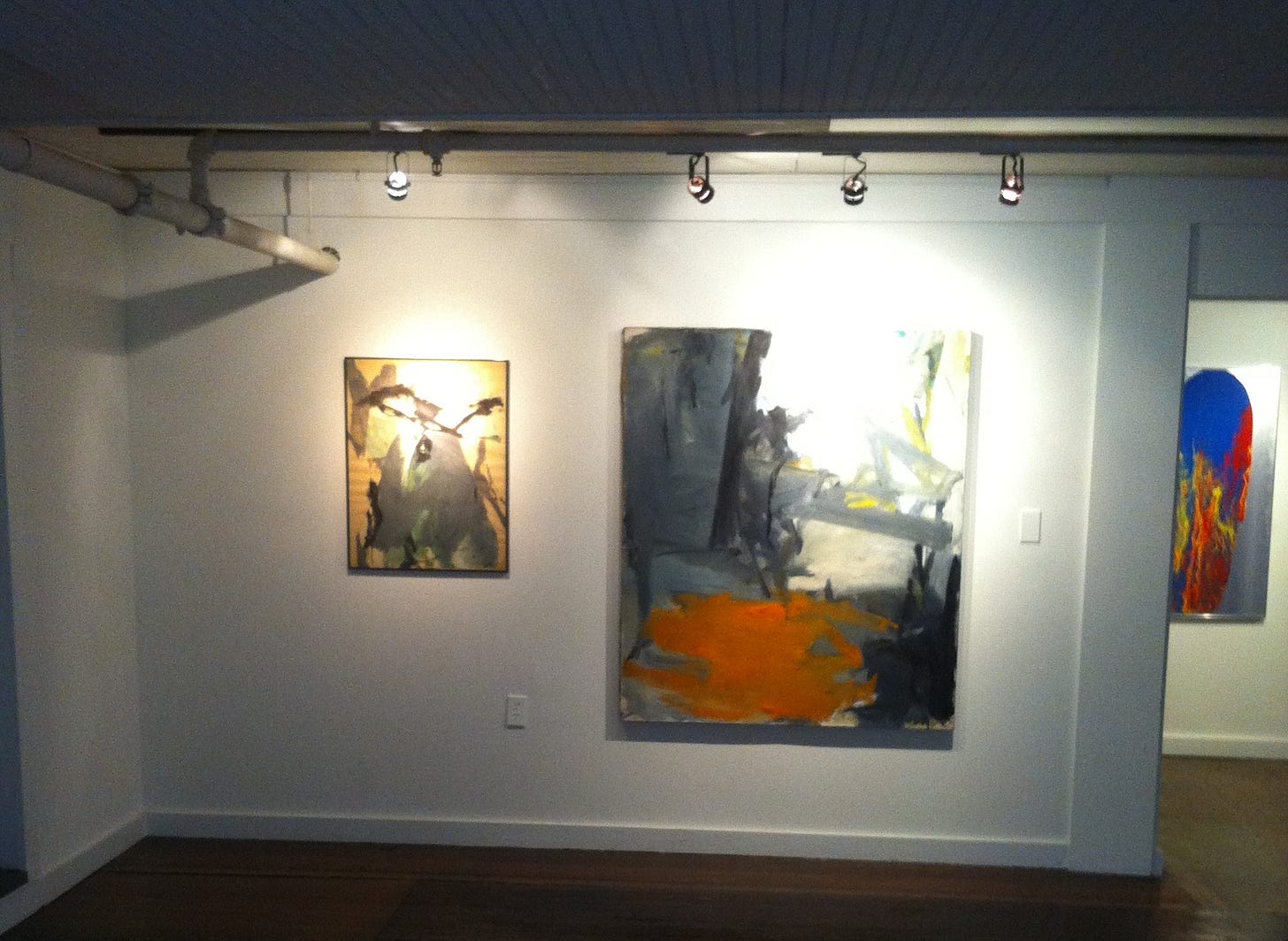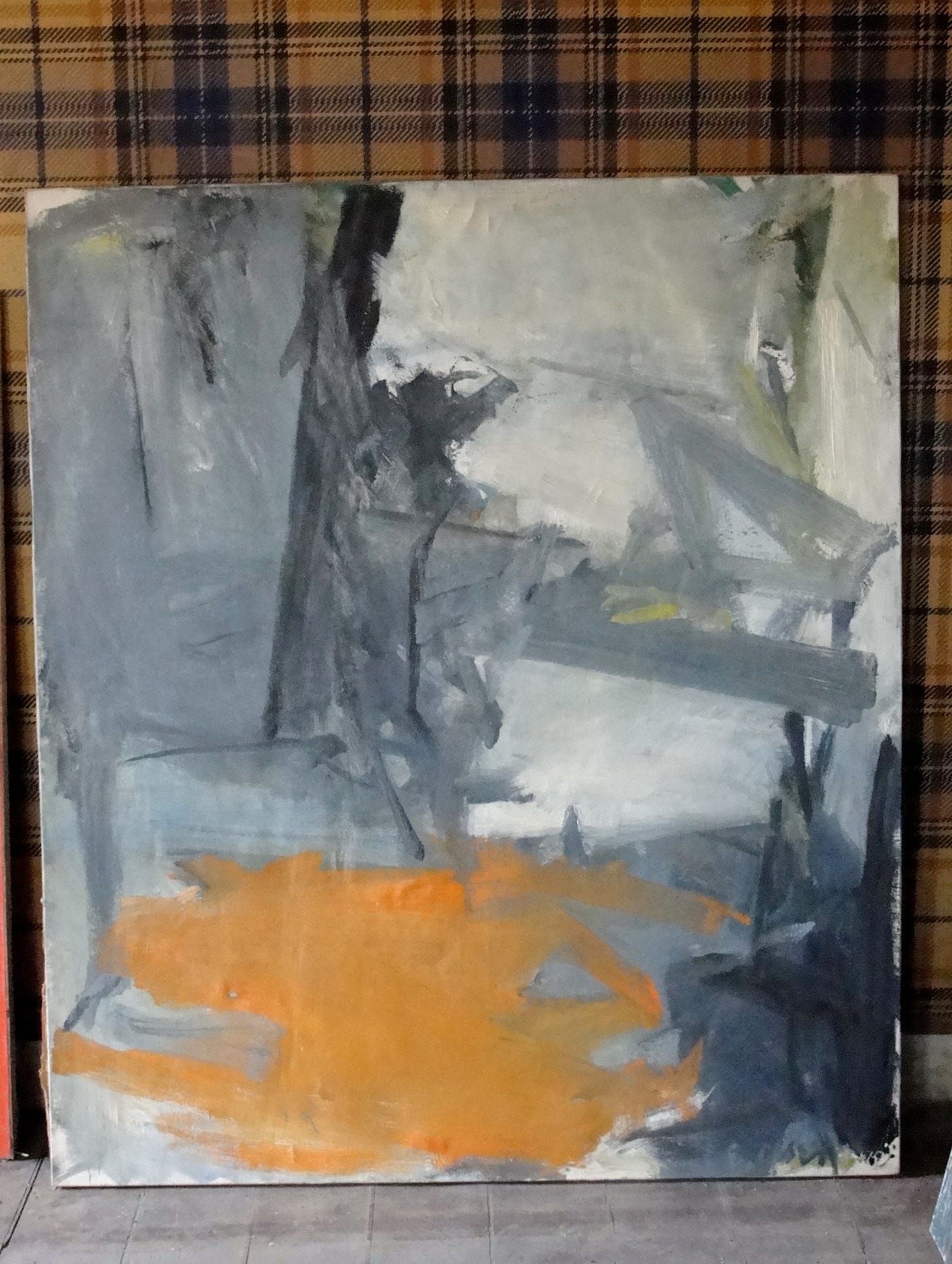Defining Success
An excerpt on creative lives, with commentary
One fall weekend a few years ago I made a day trip to Westchester to view an exhibit of women artists in Abstract Expressionism. I was surprised at how many I hadn’t heard of. I had read Mary Gabriel’s account of five women who exhibited in the influential “Ninth Street” exhibit in New York City in 1951. It provided context for that art world and the push and pull of pressures on artists to balance art-making and money-making, relationships and careers. Women artists like Elaine de Kooning and Lee Krasner, especially, have been obscured by their husband’s careers, and all of the women in the book struggled against a patriarchal art establishment, from critics to collectors. Gabriel’s book explicitly aimed to give them their due, belatedly.
But the exhibit at the Katonah Museum of Art comprised all eleven women who had shown in the 1951 exhibit. The other six were women I had never heard of, like Day Schnabel, Sonja Sekula, Perle Fine, Jean Steubing, Guitou Knoop, and Anne Ryan. All come up at least briefly in Gabriel’s book, but they are not the stars. What was the difference between those who were known at the time, those who were rediscovered later, and those who were neither? In collector Richard Baker Brown’s diaries I stumbled on a reference that he had wanted to buy one of Ryan’s works but her daughter wouldn’t sell it. Later I’ll see that in Gabriel’s book too: Ryan’s daughter was known as a vigilant protector of her mother’s estate. What should have been an advantage may have been a disadvantage to circulating it. A critical reputation has too many factors to name or count, but I think of that anecdotal evidence whenever I find my father’s work in the marketplace—and whenever I imagine a future for this memoir project. To be known one must be out there; one must circulate.
Since the 1970s feminist biographers have tackled the challenge of writing women’s lives that have been overlooked or forgotten for social or cultural reasons, but even those “reclaimed” lives rely on achievements that were made in a public sphere but not sufficiently credited. When I wrote about Victorian photographer Julia Margaret Cameron I could describe and analyze her public portraits of Victorian celebrities— and I could point to her lesser-known narrative and family images as part of the same body of work, and worth re-viewing. My colleagues in the Women Writing Women’s Lives seminar at City University of New York write about the first women doctors in the United States or a group of pioneering women lawyers…. But how does one tell an artist’s life that is even more obscure, that isn’t even in the public realm? It needs a form and a tone that’s not defensive, an argument that’s open-ended. Or maybe no argument at all.
John Bernard Myers, who co-founded the influential Tibor de Nagy Gallery in 1951, had a front row seat to the development of the New York City art world. In his memoir Tracking the Marvelous he traces the emergence of the new art galleries like Borgenicht and Stable, which promoted first the Abstract Expressionists and then Pop Artists like Warhol and Robert Indiana. Paris was no longer the center of the art world, Myers declared. Why, though, did one artist succeed over another? Why Larry Rivers and Jasper Johns over Raoul Hague or Anne Ryan, he wondered? What separates the Brillo Box designer James Harvey and the Brillo Box artist Andy Warhol? my father and his neighbor, op artist Richard Anuskiewicz?
In contemplating this question Myers spends most of his time on his friend and one of his favorite artists, Robert Goodnough. “Perhaps,” he speculates,
“the answer lies deep within the characters of the less triumphant. Such people do not learn how to play the game of being an artist. They are more or less indifferent to critics and museum curators; a bit hostile to collectors; and not good at socializing in that amorphic plasma called the art world. Often they are people who need to be alone, undisturbed by the pull and push of groups.”
That sounds plausible enough, but my father was not really one of “such people.” True, he loved living alone, but he was not an introvert and he was very good at socializing. He was ambivalent about self-promotion, but so are most creative people. He always called himself an artist and he took his art seriously. And he kept working. In that sense, he was “successful” on his own terms. His return to painting was impressive, especially now that I understand better what drove him from it in the first place, but it was also consistent with his self-involvement. Painting every day was one of the ways he put himself first, which is a complicated precedent for my writing. My own children are in their twenties, but this—being here at my desk—still feels selfish. Art and family life don’t mix, I assumed. I didn’t want to make the same mistakes my father made in putting his art before his children, so I wrote around the edges of my family life.
Paradoxically, this raised the bar for how my family defined artistic “success.” The art had to be good enough, important enough, successful enough to justify all the time spent away from the family. It had to be great Art with a capital A. But how to tell what counts—especially in an era where boundaries between high and low culture were blurring? My grandfather designed a Kleenex tissue box that ended up in the Museum of Modern Art; my father has a work on paper in the Whitney Museum’s permanent collection. Which of them was more successful? I published a biography twenty years ago with a trade press, but all my books since then have been self-published. So how do I know if they are any good?
Who’s the best? What’s the ranking? Those were questions my sisters and I grew up with in more ways than one. As my father did. As most people do. The differences are mostly in the values themselves, not the fact of a hierarchy. In my family, success was cultured and gendered. For my mother, success meant staying married, and she was keenly aware of her failure. For my father, success meant a career retrospective at MoMA. My father’s few paintings in the Whitney annual exhibitions of the 1950s didn’t cut it and he never spoke about them. When I started this project I worried about broadcasting my father’s failures—as a son, an artist, a husband, a father—but instead it made me more aware of how relative (so to speak) success and failure are.

The section above is an excerpt from Daddy-O, the memoir I’ve written about my father’s art career. I’ve included other excerpts here before, and then commented on them, but it’s been a while. Still, I’ve been thinking about how we define success and failure, for creative work, for our lives, especially as we get older. This excerpt ends the second section of the book. The third section takes up my own investment in my father’s work: do I need to defend it? defend him? if so, why? How has his model of creative success or failure influenced my sense of my own career? And who gets to define “success”?
I shy away from these questions, after raising them. I wrote the book, I suppose, to answer them, but I flinch at going too deep. I’m afraid I’ll have to conclude that my father was a failure, and I am too. Or he was a success “on his own terms,” as I say above, and so am I. (How unsatisfying that feels! How does one become the kind of better person who genuinely accepts that consolation prize?) Alternately, I could ditch my dad and claim more success than he had, at least personally. (How competitive and petty this is!) But I don’t want to be more successful than he was either. I guess that’s my answer: ultimately, I have chosen loyalty over self-fulfillment. (How childish. And tiresome, even to me.)
In the section above I suggest that writing the life of the unknown artist needs its own specific shape:
It needs a form and a tone that’s not defensive, an argument that’s open-ended. Or maybe no argument at all.
But have I found one? I have two versions of this memoir: one in three parts arranged like a story, with a beginning, middle, and end; and the other in a roughly chronological sequence of discrete essays. Which is the right form? How would I know? This kind of self-interrogation is not necessarily a “form.”
I suppose I can say here that I welcome thoughts on these questions — and I do— but they may not actually help me. This is not, after all, about metrics, or definitions, but feelings. And I have to feel my way to somewhere new.
Thank you, sincerely, for your attention! My previous post describes my midsummer reading:
Reading Roundup
The summer reading roundup is a classic. As a break from all the recent art posts, let’s take a look at what else I’ve been consuming (with footnotes). From Life with Victoria Olsen is a reader-supported publication. To receive new posts and support my work, consider becoming a free or paid subscriber.




As someone who is relying on your invaluable resource “From Life” about Julia Margaret Cameron for my own work I want to thank you for writing it. In that book you succeeded in bringing London in the 1800s to life. You brought the Cameron family to life. You placed her personally and professionally thoroughly as no one had before you or has since. I have no idea how many books sold or what it did to inspire your future but to me that book is successful.
It's funny--I spend so much time thinking about defining success and measuring it, but always in the context of organizations, strategy, mission, etc. That's been the center of my professional life for years now. My tactic there is to get really concrete. But I've never turned to look at this question with any rigor in the fuzzy world of personal achievement--maybe because the personal so resists that tactic.
Your dad is a model for me of how to be a successful painter in at least one huge (and concrete) way: he got up every day and he painted. I know you call this out--but that's not just success on his own terms. I dream of having that kind of creative engagement in my later years.
But yeah, success is so complicated. Internal. External. Satisfaction. Money. Recognition. Engagement. Pleasure. So many dimensions.
Love this piece.